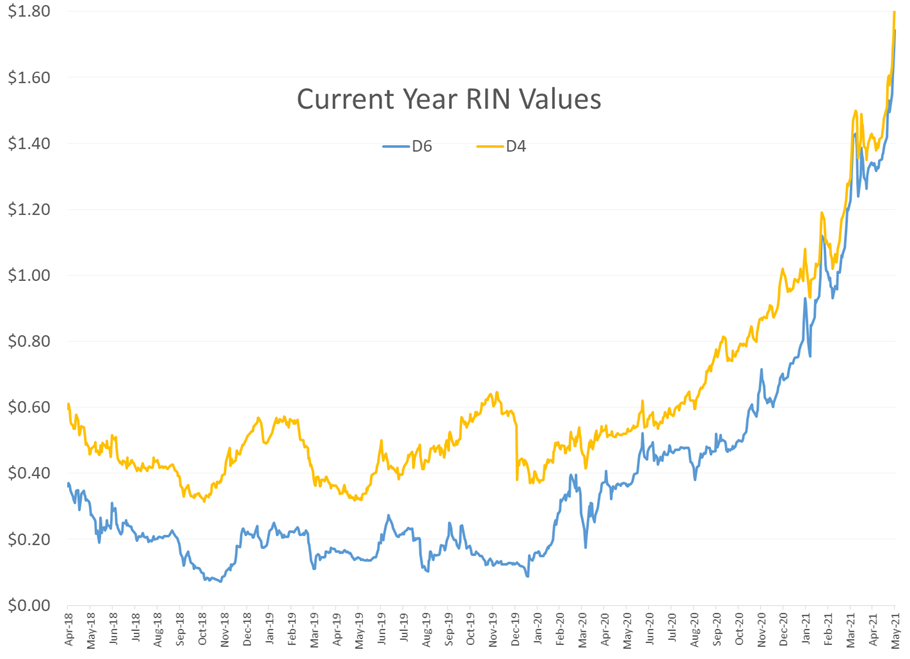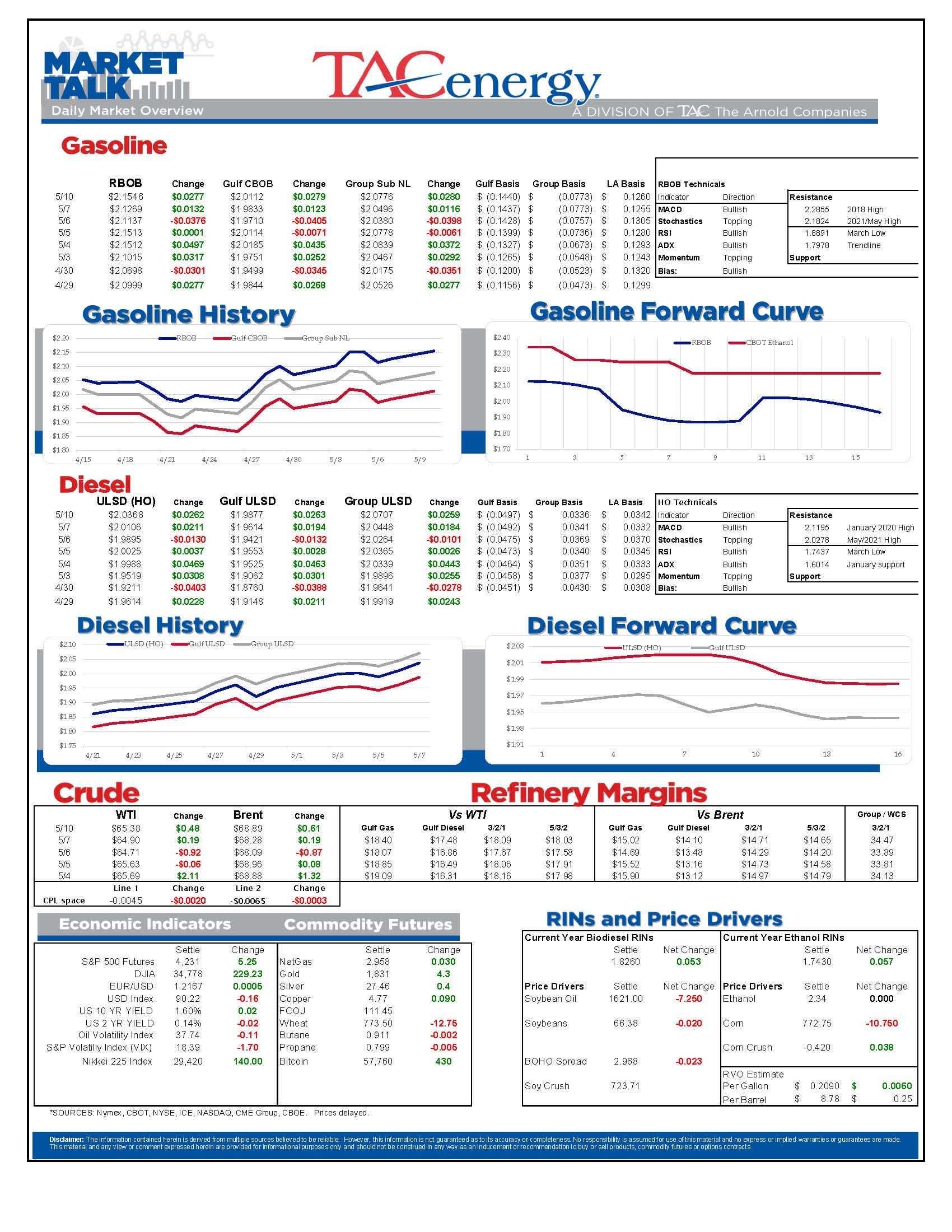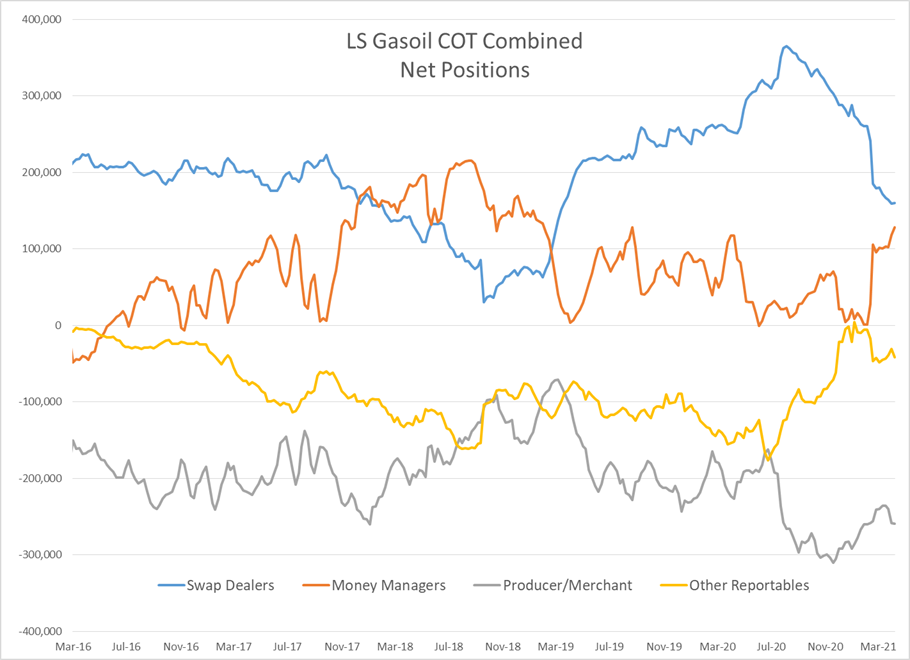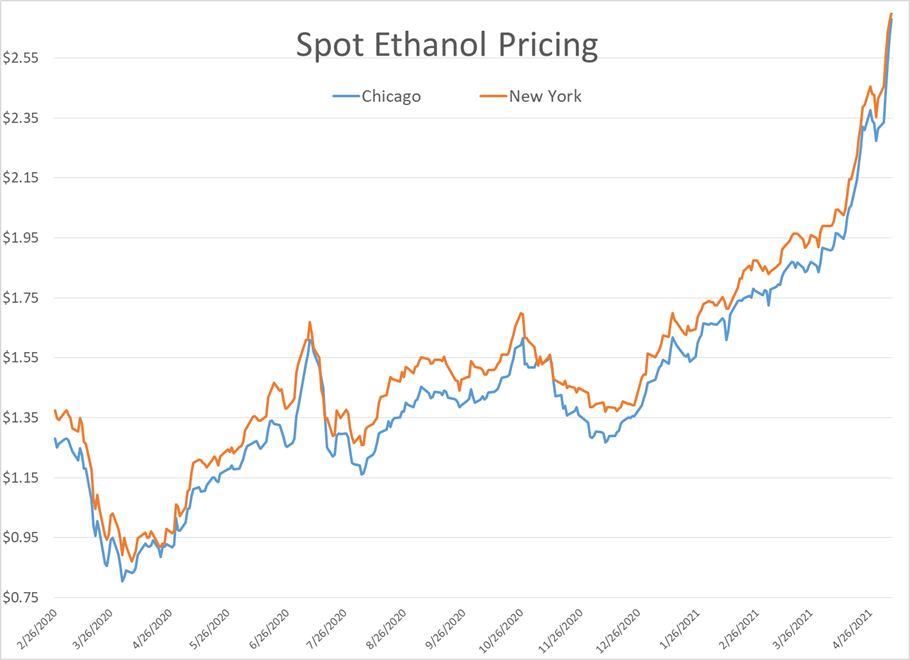Most Important Refined Fuel Pipeline In US Knocked Offline

The most important refined fuel pipeline in the US, and arguably the world, was knocked offline by a ransom ware attack Friday, and most of that system was still offline Monday morning causing supply allocations to be locked down across the East Coast, and double digit price increases by suppliers from Florida to New England.
Gasoline futures are up 8 cents since the news started to break Friday morning, which is only about half of the increase we saw when Colonial was forced to shut its mainline in 2016 due to a leak. One of the big differences this year is that the pipeline wasn’t operating at capacity prior to the event, so there’s a little more supply cushion available than there was in prior years. So far the relatively muted response in both futures and basis markets suggest that the big traders don’t believe this will be a long term event.
You can read plenty of guesses as to when operations will be restored on the numerous articles written about this situation over the weekend, but at this point, no one outside of the hackers probably can say for sure. The bad news about the widespread media coverage of this event is that it’s more likely to encourage people to fill up tanks with fuel they don’t need, which can create shortages even if the pipeline was operating at normal rates.
Here’s a good estimate for the likely scenarios of how this situation will play out https://www.cnbc.com/2021/05/10/largest-us-fuel-pipeline-colonial-still-mostly-shut-impact-and-reopening.html
To help minimize the shortage, Driver hour waivers have already been granted. RVP waivers and a Jones Act waiver will also be discussed this week, but have not yet been approved. No matter what measures are taken, it’s impossible to replace more than 100 million gallons of fuel delivery capacity in a short period of time, so these measures will just help ease the shortages if the downtime is extended, not eliminate them.
Closing the barn door after the horse has escaped? The White house has created a task force to deal with the hack.
Insider trading? Money managers increased their net length in refined products last week ahead of the pipeline shutdown. While it’s extremely unlikely that any hedge funds that make up the bulk of those positions knew this was coming, it’s possible the hackers would try to make money off of this situation, and could provide another avenue to tracking down the culprits. Given that the net length held by large speculators in both WTI and Brent was also up on the week, the positioning ahead of the shutdown was more likely due to optimism for economic recovery than anything sinister.
In other news that no one will care about until the Colonial situation is resolved: Baker Hughes reported an increase of 2 oil rigs last week, snapping a 2 week decline. Ethanol and RIN values continued their spike on Friday, but some early selling in grain markets this morning could mean a pull-back is in the cards.
Click here to download a PDF of today’s TACenergy Market Talk.
Latest Posts
Week 16 - US DOE Inventory Recap
Energy Markets Trading Quietly In The Red As Ethanol Prices Rally To Five-Month High
The Struggle For Renewable Producers Continues As A Rapid Influx Of Supply And Crashing Credit Prices Make Biodiesel
After Years Of Backwardation, Diesel Prices Have Slipped Into Contango Over The Past Week
Social Media
News & Views
View All
Week 16 - US DOE Inventory Recap

Energy Markets Trading Quietly In The Red As Ethanol Prices Rally To Five-Month High
Energy markets are trading quietly in the red to start Wednesday’s session after a healthy bounce Tuesday afternoon suggested the Israel-Iran-linked liquidation had finally run its course.
There are reports of more Ukrainian strikes on Russian energy assets overnight, but the sources are sketchy so far, and the market doesn’t seem to be reacting as if this is legitimate news.
Ethanol prices have rallied to a 5-month high this week as corn and other grain prices have rallied after the latest crop progress update highlighted risks to farmers this year, lower grain export expectations from Ukraine, and the approval of E15 blends this summer despite the fact it pollutes more. The rally in grain and renewables prices has also helped RIN values find a bid after it looked like they were about to test their 4-year lows last week.
The API reported small changes in refined product inventories last week, with gasoline stocks down about 600,000, while distillates were up 724,000. Crude oil inventories increased by 3.2 million barrels according to the industry-group estimates. The DOE’s weekly report is due out at its normal time this morning.
Total reported another upset at its Port Arthur refinery that’s been a frequent flier on the TCEQ alerts since the January deep freeze knocked it offline and damaged multiple operating units. This latest upset seems minor as the un-named unit impacted was returned to normal operations in under an hour. Gulf Coast basis markets have shrugged off most reports of refinery upsets this year as the region remains well supplied, and it’s unlikely we’ll see any impact from this news.
California conversely reacted in a big way to reports of an upset at Chevron’s El Segundo refinery outside of LA, with CARBOB basis values jumping by more than a dime. Energy News Today continued to show its value by reporting the upset before the flaring notice was even reported to area regulators, proving once again it’s ahead of the curve on refinery-related events. Another industry news outlet meanwhile struggled just to remember where the country’s largest diesel seller is located.
Click here to download a PDF of today's TACenergy Market Talk

The Struggle For Renewable Producers Continues As A Rapid Influx Of Supply And Crashing Credit Prices Make Biodiesel
The sigh of relief selloff continues in energy markets Tuesday morning, with gasoline prices now down more than 20 cents in 7 sessions, while diesel prices have dropped 26 cents in the past 12. Crude oil prices are within a few pennies of reaching a 1 month low as a lack of headlines from the world’s hot spots allows some reflection into the state of the world’s spare capacity for both oil and refined products.
Gasoline prices are trading near a 6-week low this morning, but still need to fall about another nickel in order to break the weekly trendline that pushed prices steadily higher since December. If that trend breaks, it will be safer to say that we saw the end of the spring gasoline rally on April 12th for the 2nd year in a row. Last year RBOB futures peaked on April 12 at $2.8943 and bottomed out on May 4th at $2.2500. The high (at this point) for this year was set on April 12th at $2.8516, and the low overnight was $2.6454.
It’s not just energy commodities that are seeing an unwind of the “flight to safety” trade: Gold prices had their biggest selloff in 2 years Monday and continue to point lower today. Just how much money poured into commodities in the weeks leading up to the direct confrontation between Israel and Iran is unclear, but we have seen in year’s past that these unwind-events can create a snowball effect as traders can be forced to sell to cover their margin calls.
Supply > Demand: The EIA this morning highlighted the record setting demand for natural gas in the US last year, which was not nearly enough to offset the glut of supply that forced prices to a record low in February. A shortage of natural gas in Europe was a key driver of the chaotic markets that smashed just about every record in 2022, and an excess of natural gas supply in Europe and the US this year is acting as a buffer, particularly on diesel prices.
The struggle for renewable producers continues as a rapid influx of supply and crashing credit prices make Biodiesel, RD and SAF unprofitable for many. In addition to the plant closures announced in the past 6 months, Vertex Energy reported Monday it’s operating its Renewable Diesel facility in Mobile AL at just 50% of capacity in Q1. The truly scary part for many is that the $1/gallon Blender's tax credit ends this year and is being replaced by the “Clean” Fuel production credit that forces producers to prove their emissions reductions in order to qualify for an increased subsidy. It’s impossible to say at this point how much the net reduction will be for domestic producers, but importers will get nothing, and at current CI values, many biodiesel producers may see their “blend credit” cut by more than half.
Click here to download a PDF of today's TACenergy Market Talk.








